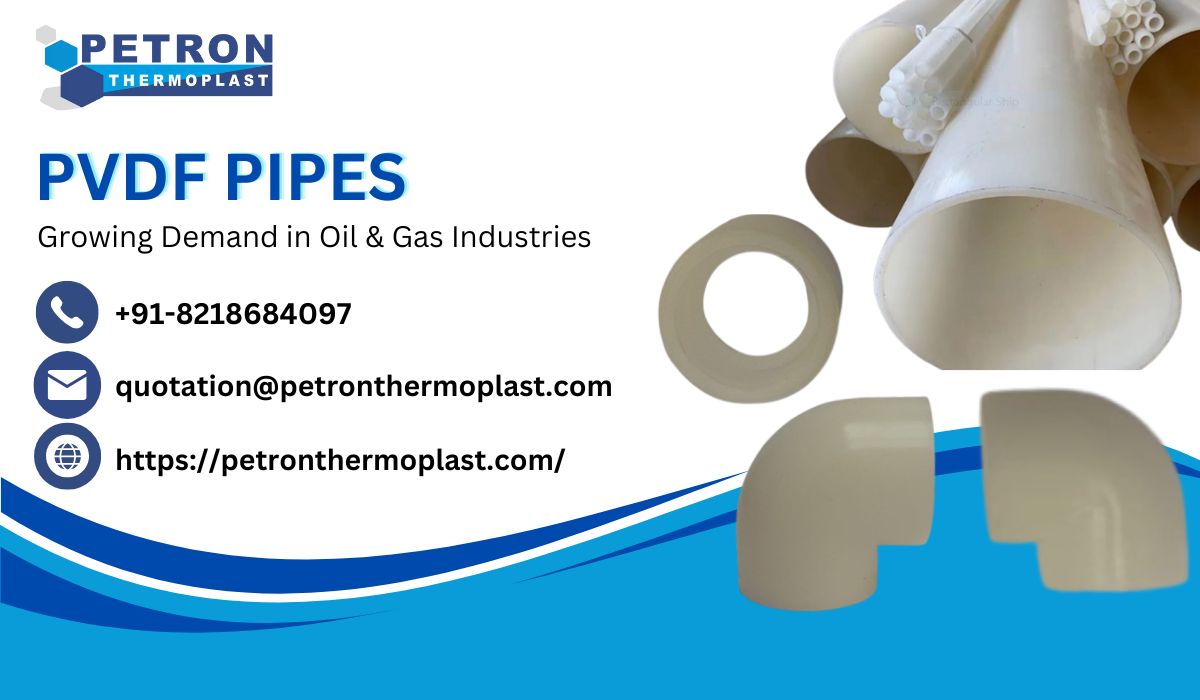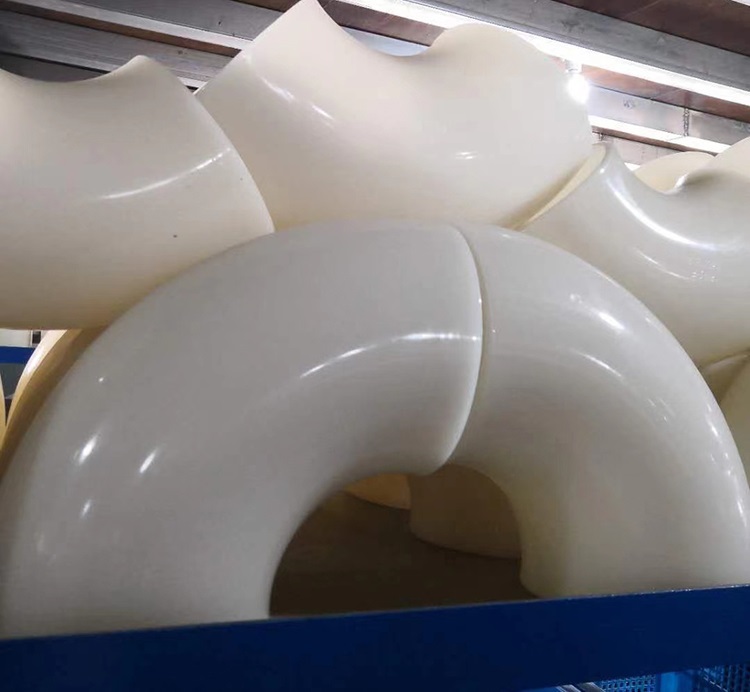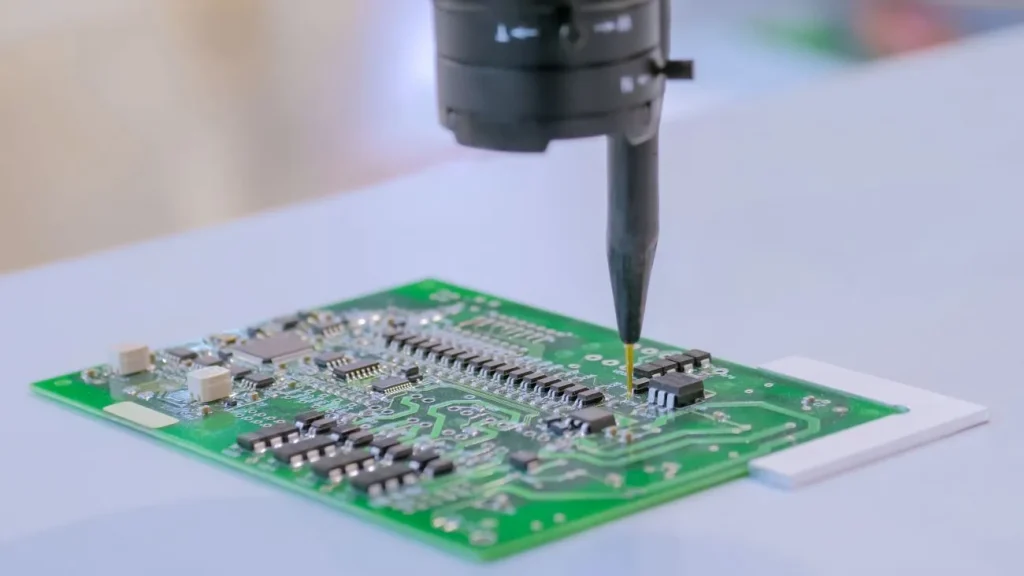
The oil and gas industry operates under some of the harshest environmental conditions, requiring materials that can withstand extreme temperatures, pressure, and exposure to highly corrosive substances. One material that has gained significant attention in recent years is Polyvinylidene Fluoride (PVDF), a high-performance thermoplastic known for its exceptional chemical resistance, mechanical strength, and durability. As a result, PVDF pipes are becoming a preferred choice for critical applications in the oil and gas sector.

Why PVDF Pipes Are Gaining Popularity in Oil & Gas?
The increasing adoption of PVDF piping systems in the oil and gas industry is driven by several key factors:
-
Superior Chemical Resistance
Oil and gas operations involve handling highly aggressive chemicals, acids, and hydrocarbons. PVDF pipes exhibit excellent resistance to corrosive substances, making them ideal for transporting crude oil, refined petroleum products, and chemical additives.
-
High Temperature and Pressure Resistance
PVDF pipes can withstand a wide range of temperatures, from -40°C to 150°C, without losing their structural integrity. This makes them suitable for extreme operating conditions, including offshore drilling and onshore refineries.
-
Lightweight and Easy Installation
Compared to traditional metal pipes, PVDF pipes are significantly lighter, which simplifies transportation and installation. Their flexibility and ease of fabrication reduce labor costs and installation time, enhancing overall project efficiency.

-
Excellent Mechanical Strength and Durability
PVDF is known for its high tensile strength and impact resistance, making it a reliable choice for pipelines subjected to mechanical stress and external pressure. This ensures a longer service life and reduced maintenance needs.
-
Low Maintenance Requirements
Due to their non-corrosive nature, PVDF pipes require minimal maintenance, reducing downtime and operational costs for oil and gas companies.
Key Applications of PVDF Pipes in Oil & Gas Industries
PVDF pipes are widely used across various segments of the oil and gas industry. Some of the most common applications include:
- Chemical Injection Systems: PVDF pipes are used to safely transport aggressive chemicals in injection systems to enhance oil recovery and well stimulation.
- Produced Water Treatment: The high resistance of PVDF to saltwater and chemicals makes it suitable for treating and transporting produced water in offshore and onshore fields.
- Gas Processing Plants: PVDF pipelines are used in gas treatment facilities to handle hazardous chemicals and ensure safe operations.
- Oil Refining and Petrochemical Processing: These pipes play a crucial role in the processing and transportation of crude oil and refined petroleum products.
- Subsea Pipelines: PVDF pipes are increasingly used in offshore drilling operations due to their ability to withstand harsh marine environments.
PVDF Pipes vs. Traditional Metal Pipes: A Comparative Analysis
| Feature | PVDF Pipes | Traditional Metal Pipes |
| Chemical Resistance | High | Prone to corrosion |
| Temperature Resistance | Up to 150°C | Varies by metal type |
| Weight | Lightweight | Heavy |
| Installation Cost | Lower | Higher |
| Maintenance | Low | High |
| Service Life | Long | Moderate to short (due to corrosion) |
Future Outlook: Why PVDF Pipes Will Dominate the Oil & Gas Industry
The demand for PVDF piping solutions is expected to rise significantly due to the industry’s growing focus on safety, cost-effectiveness, and sustainability. Some key trends fueling this demand include:
- Expansion of Offshore Drilling: With oil companies venturing into deepwater and ultra-deepwater drilling, the need for corrosion-resistant PVDF pipes is increasing.
- Shift Towards Advanced Materials: Companies are actively seeking alternatives to metal pipes to reduce maintenance costs and improve efficiency.
- Stringent Environmental Regulations: The push for safer, more sustainable solutions in the oil and gas sector is driving the adoption of PVDF pipes.
Conclusion
As the oil and gas industry continues to evolve, the need for high-performance, durable, and cost-effective piping solutions is greater than ever. PVDF pipes offer unmatched benefits in terms of chemical resistance, longevity, and ease of installation, making them the ideal choice for various applications in the sector. With increasing advancements in PVDF technology, its role in shaping the future of oil and gas infrastructure is undeniable.
For companies looking to enhance their piping systems, Petron Thermoplast provides top-quality PVDF pipes tailored to meet industry requirements. Contact us today to learn more about our advanced PVDF piping solutions!







One Response
good